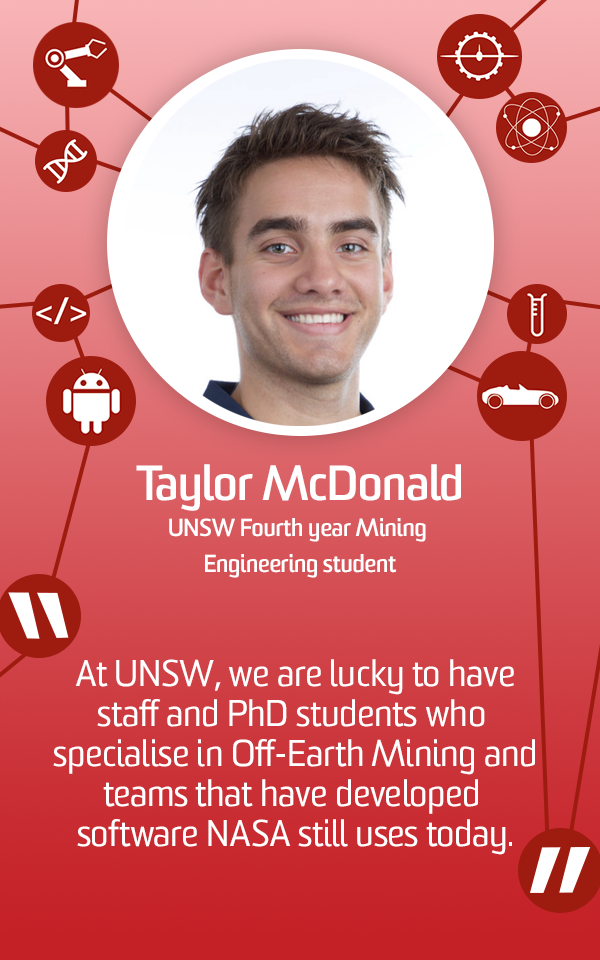Never did I think I would be working with a NASA engineer as an undergraduate at UNSW.
In T3 of last year I took a short study break to meet some friends at the Roundhouse for a happy hour get together. After a bit of chatting, they brought up the new program they were joining; Vertically Integrated Projects, which had a project team called MINEX. They explained it was a year-long project where I would work with engineers from different disciplines to design solutions to challenges in the mining industry.
I was initially drawn to mining engineering after becoming fascinated by the huge and complex industrial machinery I would see on the National Geographic Channels. After hearing there was a program where we could design the technology ourselves, I applied straight away.
When I met my team, it was a group of undergraduate engineers from different disciplines who were all excited about the opportunity to design technology related to the mining industry. The projects we could take on covered a range of topics like automation, digital modelling and what we chose, Off-Earth Mining.
Being able to extract ice on the moon as a water supply is a vital step in the advancement of space exploration and moon colonisation. At UNSW we are lucky to have staff and PHD students who specialise in Off-Earth Mining and teams that have developed software NASA still uses today.
At commencement of the project in early 2020, we explored the vast array of technology being created to enable space mining on the moon. Our first project was to redesign the Bucket Drum for the NASA RASSOR robot. A robot whose purpose is to excavate, transport and dump ice on the moon. We spent many hours in meetings researching and discussing technological possibilities, as well as bouncing ideas off each other.
We were fortunate to be able to conduct meetings with Laurent Sibille, a senior technology developer at NASA who has been part of the teams designing robots for Off-Earth Mining. Learning from a professional working at NASA was fascinating. We discussed things such as the history of the effort to mine on the moon, properties of Lunar soil and NASA technology.We were able to pitch our own RASSOR designs to Laurent and conduct an insightful discussion on the design requirements for robots excavating ice on the moon.
We are currently utilising our findings from the RASSOR project and research on lunar mining to start our next major project which we will be working on for the rest of the year. Our goal is to create an optimisation tool that can simulate and assess the performance of lunar mining activities. The software will be able to optimise mining systems and fleets to ensure adequate water supply as well as provide technical recommendations on equipment.
A major goal for our team is that our end product could actually be useful for space agencies. We are lucky to have the opportunity to continue receiving feedback from academics at UNSW and industry professionals to ensure our technology is practical in the field. Hopefully we can end this year with a product that makes an impact on the progression of off-earth mining research. Watch this space.

